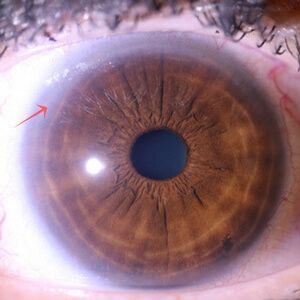Can Your Eyes Predict Stroke Or Heart Attack Risk?
Ophthalmologists and optometrists can see changes in the circulatory system by looking at the circulation in the retina that may warn of stroke or heart attack riskstroke or heart attack risk. Iridologists can see changes by looking at the surface of the iris and sclera.
by Judith Cobb, MH, CI3, NCP, NNCP, CCII3
DISCLAIMER
This article is not meant to diagnose nor prescribe. It is meant for educational purposes only. Judith Cobb, Cobblestone Health, and Nature's Sunshine Products accept no responsibility for results you get, whether good or bad, from using this information. Always seek the guidance of a qualified health professional.
There are circulatory iridology signs that tell us about the genetic strength of the heart and circulation. There are also markings in the sclera that give us clues that the circulatory system is not happy right now.
But just because someone has a marker in his iris suggesting the genetic potential to have heart or circulatory issues does not mean he will have problems.
If that person eats and drinks healthfully, takes care of his emotions, and makes choices that are protective of the circulatory system, there is a distinct possibility that he can, at the very least, minimize problems, and potentially stave problems off entirely.
The sclerae show us how he doing in his efforts. As the circulation starts to struggle and get congested, potentially before the problems are developed enough to be obvious, there will be changes in his sclerae.
We never, ever, use iridology to diagnose (name a disease) or prescribe (give a remedy to heal a disease). We always use it to assess strengths, weaknesses, and imbalances. As we understand these things, we can draw on our herbal, nutritional, and other holistic training to teach our clients how to create a better balance. At times we may need to use the information gathered to refer our clients to seek medical attention.
When you see circulatory markers, you need to ask your client heart- and circulation-relevant questions.
Two circulatory iridology signs
At first glance these signs may seem similar; however, one has an acquired base and the other has a stronger genetic base.
1) Lipemic Diathesis
 You likely have noticed this sign when looking at older people – your grandparents, for example. What you will have seen is a white band toward the outer edge of the iris. The band may go all the way around – we all this an annulus – or it may be partial – an arcus.
You likely have noticed this sign when looking at older people – your grandparents, for example. What you will have seen is a white band toward the outer edge of the iris. The band may go all the way around – we all this an annulus – or it may be partial – an arcus.
The most common areas in which to see a lipemic diathesis are at the top of the iris and/or the bottom of the iris.
It doesn’t matter if the eyes are hematogenic (brown), biliary (hazel, light brown, or green), or lymphatic (blue).
The lipemic diathesis is an unusual eye sign for a few reasons. The first is that it’s not in the iris or the sclera, it’s in the cornea. The second is that this is an acquired sign that can be genetically influenced. The third is that it is a liver sign as well as a circulatory sign.
This marking suggests an inefficiency in the liver in processing fats and carbs. This inefficiency can lead to the creation of the kinds of fats, not necessarily cholesterol, which can sediment in arteries and block them.
The wider, more opaque, and more complete the lipemic diathesis is, the more advanced the problems, both liver and circulatory, usually are.
2) Circulatory Ring

The circulatory ring shows up as a blue haze just outside the iris on the sclera. It may go all the way around the iris, or it may not. When it is partial, it most commonly appears at the top or bottom of the iris. The circulatory ring suggests compromised circulation.
The most obvious symptoms for the lower body are cold extremities and/or numbness. For the upper body the most common symptoms revolve around poor memory and fuzzy thinking.
The circulatory ring can get darker and more intense, or can get lighter and less intense, but we have no photographic proof of it disappearing. This suggests we can reduce the effects of this genetic tendency.
These are just two of many indicators that suggest the potential for, or the existence of, potential circulatory compromises.
Please join me here to learn more about these two iridology circulatory signs:
For more information, watch this webinar:


Copyright © 2018 by Judith Cobb, Cobblestone Health Ltd. All rights reserved. Please respect the time it takes to write and publish articles. If you will link to this article and give proper attribution, you are encouraged to quote sections (though not the entire article).

